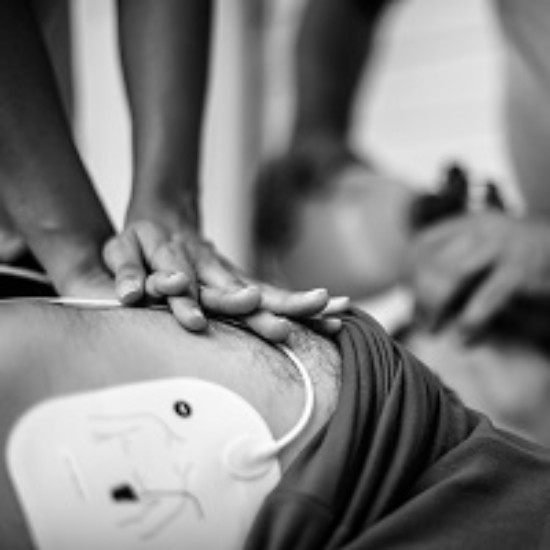
Without early CPR and the use of an Automated External Defibrillator, only about 2.5% of sudden cardiac arrest victims survive. But the initiation of early CPR and AED use within minutes, can raise a victim’s chance of survival to almost 80%.
Sudden cardiac arrest can happen at any time, to anyone, of any age. When someone experiences sudden cardiac arrest (SCA), minutes count. A person in SCA is not breathing and their heart has stopped. You can immediately perform CPR to keep the person’s brain and heart alive while waiting for professional, medical help. In addition to performing CPR, using an AED (Automated External Defibrillator) can give the person the best possible chance to survive.
AEDs are small portable devices which can deliver an electric shock to a person’s heart. AEDs are easy to use, you simply turn it on and place the electrode pads on the individual as shown in images on the pads. The AED will monitor the individual’s heart rate and, if necessary, provide an electrical shock. This shock can help to stop abnormal electrical impulses in the heart and allow it to return to normal beating rhythm. This is fully automated, taking the responsibility away from the AED user. Because the AED is programmed to make this determination without user input, your employees can have confidence that utilizing the AED is the correct decision in a medical emergency.
What to look for when selecting an AED?
When selecting an AED for your office, make sure your AED is fully automated in determining and delivering an electric shock. Another feature you should look for is clear communication from the device, it is best when AEDs utilize audio communication for instructions and warning for when the victim is about to be given a shock. You should also ask about the compatibility of your AED electrodes with those utilized by EMTs. Selecting an AED that is compatible with professional AEDs allows professionals to disconnect your device, connect their own, and continue on with life-saving procedures.
Some AED providers can also offer AED cabinet monitoring. This allows an alert to be sent to management and first responders if your AED cabinet is opened – indicating that the AED is needed for an emergency and medical attention is needed. Get first responders on the way faster with offsite monitoring of your AED cabinet.
Once you have selected your AED, make sure to provide training for your staff so that they are comfortable using the device in an emergency. Click here for an overview of A1’s CPR & AED Training class.
A1 is a leading expert on the latest technology in life safety. To find out more information or to ask a question, click here or call us at 1-800-859-6198.
